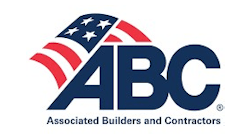One of my favorite TV shows for the past few years has been the Big Bang Theory. In one episode, Raj and Howard mail order action figures of themselves but when the toys arrive, they turn out looking nothing like them. At that point they decide they’re going to buy a 3D printer and make their own action figures.
Action figures and whistles aside, 3D printing technology continues to evolve. Its potential impact on manufacturing grows alongside this evolution. The Association of Equipment Manufacturers (AEM) says that it’s “critical for manufacturers to gain a strong understanding of 3D printing’s potential and determine how best to leverage it to meet operational needs and goals” in a recent article that lists the “5 Things Every Manufacturer Needs to Know About 3D Printing.”
Here is AEM’s list:
1. 3D printing is a trend that’s still on the rise. While 3D printing’s potential is enormous, the manufacturing industry is still in the process of identifying all of its potential applications. According to Dr. Lonnie Love, corporate research fellow at Oak Ridge National Laboratory, the consensus right now among leading additive manufacturing experts is that the technology’s immediate potential can be most readily found in smaller-scale deployments.
(3D printing) is not going to change all of manufacturing overnight,” says Love. “It’s not going to displace casting. It’s not going to displace welding.”
2. Manufacturers can leverage 3D printing equipment to do things they’ve never done before. Love and his colleagues at Oak Ridge National Laboratory can attest to both the technology’s incredible capabilities and its value proposition for manufacturers, as they were involved in building the world’s first operational 3D printed excavator.
Known as Project AME (Additive Manufactured Excavator), the excavator was 3D printed using a variety of machines to create and assemble three components: a cab, a boom, and a heat exchanger. In addition, the excavator’s boom was fabricated using a cutting-edge free-form additive manufacturing technique to print large-scale metal components. It was an incredible undertaking, and the success of Project AME proved the sky’s really the limit in terms of what 3D printing technology can do.
“Project AME should be held up as an example of what can be accomplished when we are able to bring together (a group of people) to innovate ideas for the betterment of the industry as a whole,” says Love.
3. The technology behind 3D printing is still growing and evolving. While the manufacturing industry is coming around on understanding the value of the technology, there remain some hurdles standing in the way of widespread adoption of 3D printing. Chief among them is that 3D printing is not yet fast enough, says Love, who recently appeared on the inaugural episode of AEM’s Thinking Forward podcast.
Additive Manufacturing “We need to be going an order of magnitude faster,” continues Love. “When you start looking at manufacturing, cycle time is the big thing, and that was something nobody paid attention to in the additive industry. When you make these great parts at low volumes, you don’t care that it takes a week or a month… but we’ve got to go faster because it drives the productivity up and the costs down (for manufacturers).”
4. 3D printing equipment can be used to help manufacturers overhaul expensive and archaic processes. The costly and time-consuming process of tooling is a prime example of an opportunity for 3D printing to be leveraged by manufacturers in order to create efficiencies. According to Love, the production of molds, jigs, and fixtures used in the mass production of heavy equipment can take months, run six-figure costs, and very often involve tooling companies based overseas.
However, Love believes that the widespread adoption of additive manufacturing could change all that.
“This may be a mechanism to rapidly get tooling back in the U.S.,” Love says, “To make it take days and not months. It costs thousands instead of hundreds of thousands. We’ve already proven this on the automotive and aerospace sides. Now it’s time to take a look at construction and see where it fits.”
5. 3D printing can help manufacturers save money. The equipment industry has earned a well-deserved reputation for designing and building machinery that stays in use for decades. However, as a result, manufacturers are forced to spend heavily on keeping massive inventories of spare parts on hand, ready for delivery in the event of a customer’s order.
According to Love, companies are now combating that challenge by cutting back on the overhead costs of warehouse space through 3D printing.
“The advantage of this technology is you could actually print a replacement part without having to have that inventory,” Love says. “That, to me, has tremendous potential.”
The list mentions Dr. Lonnie Love and the world’s first 3D printed excavator, Project AME. I was there when Dr. Love unveiled it at ConExpo 2017 nearly a year ago.









